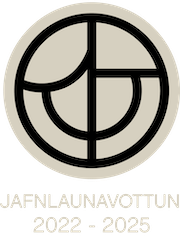Reynsla í sjónskynjun: Beining athygi og mærgræð skynjun - verkefni lokið
Fréttatilkynning verkefnisstjóra
As we interact with the environment, our gaze and attention are pulled towards items that we have interacted with before and are behaviourally important to us.
An example is when we are at the playground with our child wearing a red coat. Even though our gaze may momentarily turn away from the child as we for example chat with other parents, our gaze is easily and quickly drawn towards the red color of the coat that our child is wearing. In this way visual attention in the environment can be primed based on previous history of attending. We contrasted such priming with what has been called perceptual priming where our perception of the current visual input is biased towards the previous input. A pertinent example is the motion aftereffect, where after having viewed a stimulus moving in one direction we perceive a stationary stimulus as moving in the other direction. This phenomenon has sometimes been called the waterfall illusion. We tested the interdependence of these two forms of history effects, using both psychophysical methods and functional neuroimaging (functional magnetic resonance imaging). Our results strongly suggest that the two history effects are independent of one another and that our brain contains two different mechanisms that are devoted to different aspects (attention versus perception) that operate on different timescales within the brain.
Heiti verkefnis: Reynsla í
sjónskynjun: Beining athygi og mærgræð skynjun / Experience dependence in
attention allocation and conscious vision
Verkefnisstjóri: Árni Kristjánsson, Háskóla Íslands
Tegund styrks: Verkefnisstyrkur
Styrktímabil: 2013-2015
Fjárhæð styrks: 13,09 millj. kr. alls
Tilvísunarnúmer Rannís: 130575


